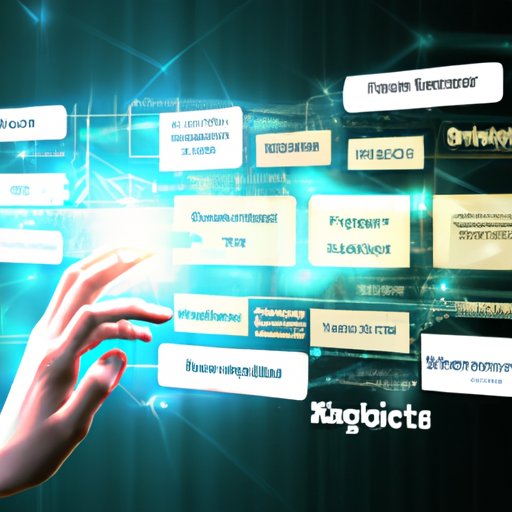Introduction
Human services technology is a term used to describe the use of digital tools and systems to improve the delivery of human services. These technologies can help organizations increase efficiency, reduce costs, and provide better access to resources for clients. By taking advantage of these tools, organizations can transform their operations and enhance their service delivery models.
Definition of Human Services Technology
At its core, human services technology is any tool or system that is used to support the delivery of human services. This includes software, hardware, systems, and processes. Examples of human services technology include customer relationship management (CRM) systems, case management software, automated data collection systems, and telehealth solutions. All of these technologies are designed to improve the way services are delivered to clients.
Overview of Benefits
The primary benefit of human services technology is that it makes service delivery more efficient. Automation and digital processes can help streamline administrative tasks, reduce paperwork, and free up staff time so they can focus on providing quality services. Additionally, human services technology can help organizations improve their communication and collaboration with other stakeholders, such as partner agencies and funders. Finally, human services technology can help make services more accessible to clients by providing them with online portals and mobile applications.

How Human Services Technology Is Transforming the Industry
Automation and Efficiency
One of the most important ways that human services technology is transforming the industry is through automation and improved efficiency. According to a study by the American Institutes for Research, “the use of technology in human services can create significant gains in efficiency and effectiveness, leading to cost savings and greater impact.” Automated systems can help streamline administrative tasks, such as data entry, record keeping, and reporting. This can free up staff time so they can focus on providing quality services to clients.
Improved Accessibility
Another key benefit of human services technology is improved accessibility. Digital tools and systems can help make services more accessible to clients by providing them with online portals and mobile applications. This can enable clients to access services from anywhere, at any time. Additionally, digital tools can help bridge the language barrier by providing translation services and other support for non-English speaking clients.
Increased Collaboration
Finally, human services technology can help organizations improve their collaboration with other stakeholders. For example, case management software can help organizations share information with partner agencies, funders, and other stakeholders. This can help ensure that clients receive the best possible care and services.

A Guide to Implementing Human Services Technology in Your Organization
Assessing Your Needs
The first step in implementing human services technology in your organization is to assess your needs. You should consider what type of technology you need, how it will be used, and how it will fit into your existing operations. Additionally, you should consider how the technology will impact your staff and clients. Once you have identified your needs, you can begin to look for the right technology to meet them.
Choosing the Right Technology
Once you have assessed your needs, you can begin searching for the right technology to meet them. When selecting technology, you should consider factors such as cost, ease of use, security, and scalability. Additionally, you should look for technology that is compatible with your existing systems and processes. Finally, you should select technology that is user-friendly and accessible to all users, including those with disabilities.
Training Staff
Once you have selected the right technology, you must ensure that your staff are properly trained to use it. Training should cover the basics of the technology, such as how to set up accounts, navigate the system, and enter data. Additionally, staff should be trained in best practices for using the technology to ensure they are using it effectively and securely.
Establishing Policies and Procedures
Finally, you should develop policies and procedures for using the technology. This should include guidelines for data entry, storage, and protection. Additionally, you should establish protocols for when and how the technology should be used. Having clear policies and procedures in place can help ensure that the technology is used correctly and securely.
Examining the Impact of Human Services Technology on Clients
Improved Services
One of the primary benefits of human services technology is improved services for clients. Automated systems can help reduce wait times, increase accuracy, and make services more accessible. Additionally, digital tools can help bridge the language barrier by providing translation services and other support for non-English speaking clients. Finally, digital tools can help make services more personalized by allowing organizations to tailor services to individual client needs.
Greater Access to Resources
In addition to improved services, human services technology can also help clients gain access to resources. For example, online portals and mobile applications can help clients find information about available services, apply for assistance, and connect with providers. Additionally, digital tools can help connect clients with resources in their local community, such as food banks and employment opportunities.
Increased Awareness of Programs
Finally, human services technology can help increase awareness of programs and services. Digital tools, such as social media and email campaigns, can help organizations reach a wider audience and inform potential clients about available services. Additionally, digital tools can help organizations engage with clients and provide them with timely updates about changes in services or programs.

Analyzing the Latest Advances in Human Services Technology
Artificial Intelligence
One of the most exciting advances in human services technology is the use of artificial intelligence (AI). AI can help automate administrative tasks, such as data entry and record keeping. Additionally, AI can be used to analyze data and identify patterns that can help organizations better understand their clients and provide tailored services. AI can also help organizations make predictions about client needs, which can help them plan for the future.
Cloud Computing
Cloud computing is another important advance in human services technology. Cloud-based systems can help organizations store and share data securely and efficiently. Additionally, cloud-based systems can help organizations collaborate with other stakeholders, such as partner agencies and funders. Finally, cloud-based systems can help organizations scale up their operations quickly and easily.
Mobile Applications
Finally, mobile applications are becoming increasingly popular in the human services field. Mobile apps can help organizations provide services to clients wherever they are, at any time. Additionally, mobile apps can help organizations track and monitor client progress. This can help organizations provide better care and services to clients.
Conclusion
Human services technology has the potential to revolutionize the way services are delivered to clients. Automation and digital tools can help organizations increase efficiency, reduce costs, and provide better access to resources for clients. Additionally, human services technology can help organizations collaborate with other stakeholders and increase awareness of programs and services. The latest advances in human services technology, such as AI, cloud computing, and mobile applications, can further enhance service delivery models. Organizations that embrace these technologies can take advantage of the opportunities afforded by them.
(Note: Is this article not meeting your expectations? Do you have knowledge or insights to share? Unlock new opportunities and expand your reach by joining our authors team. Click Registration to join us and share your expertise with our readers.)
